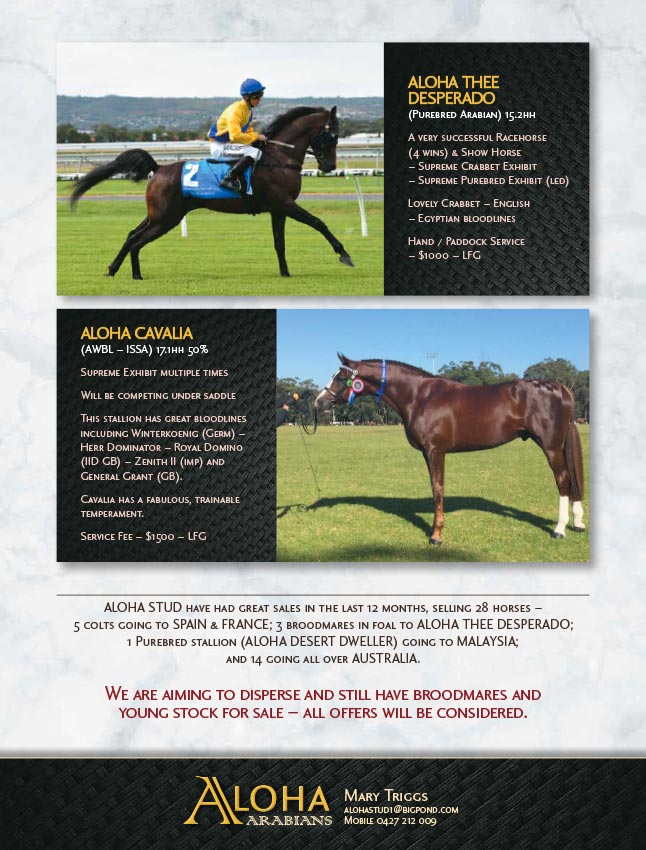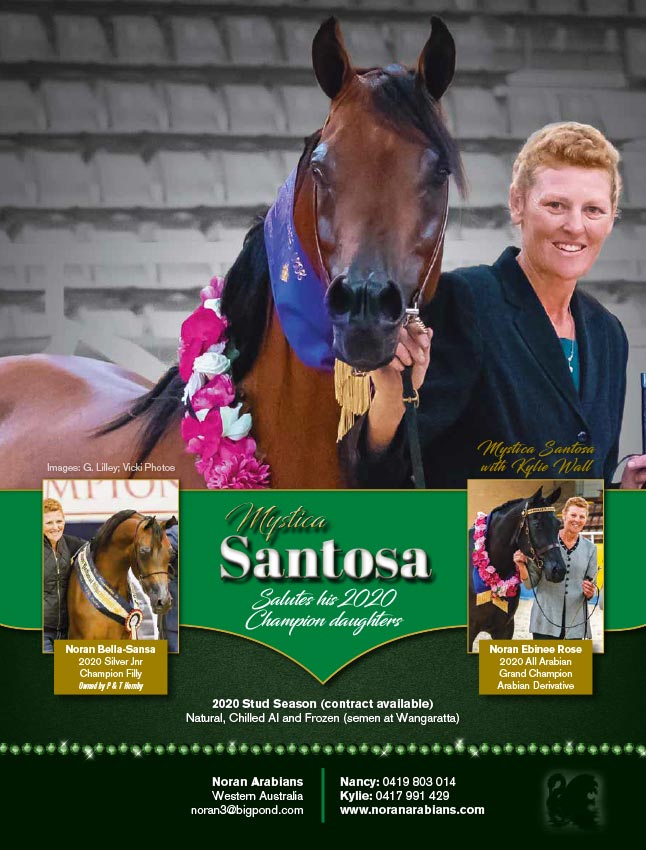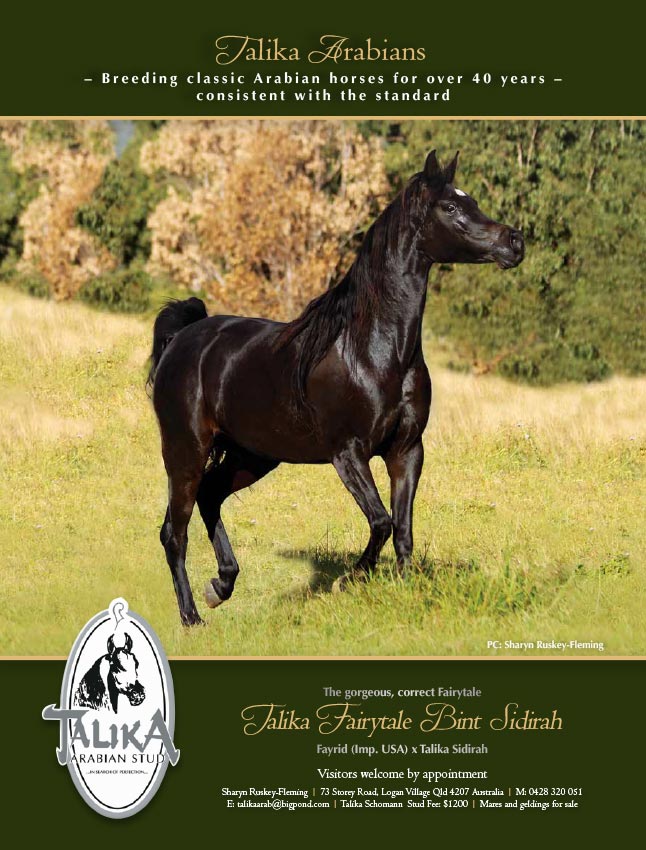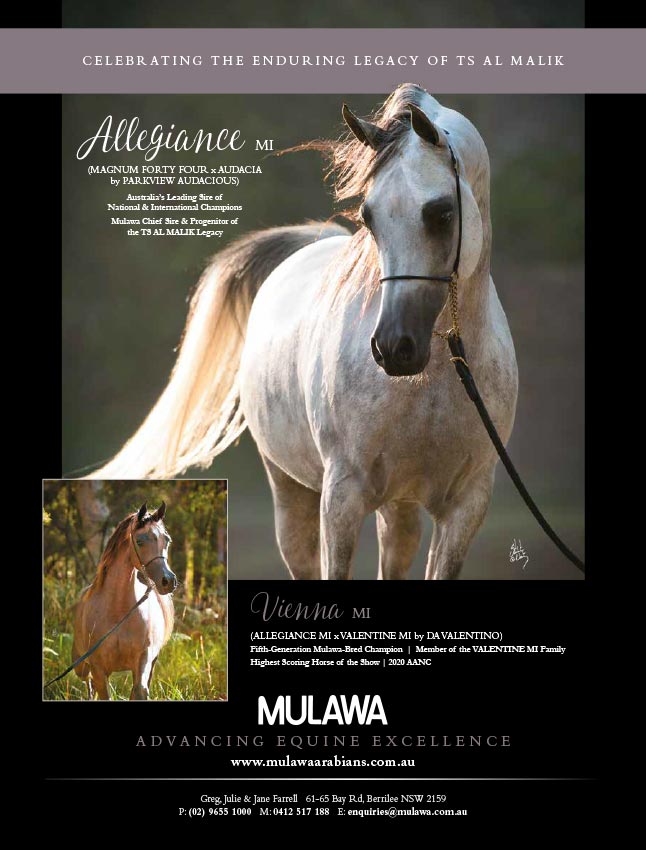
Why Register My Arabian Endurance Horse
July 6, 2017
Spotlight On Arabian Derivative Mares
July 6, 2017Imaj Zamir has gravel-crunching hooves. He is living proof horses can travel far and fast barefoot. He has a career in endurance spanning 14 years; he has clocked up thousands of kilometres without any hoof protection. He was the first horse in Australia to run 100 miles without shoes. First in Australia to win a ride outright as a barefoot competitor. He is in the top ten highest kilometre horses in Tasmania.
The partnership between Jen Clingly and Imaj Zamir (Fairview Estamir x Dasallan Zadassah) epitomises the Australian endurance riders’ motto, “To complete is to win”.
He is the one thing standing between me and my wife. Funnily enough he is the head mascot of our hoof care and education business, Wild About Hooves.
Let me share a bit of history about them…
It wasn’t without a huge amount of trepidation that Jen decided to run her horses without shoes. She had bought this young Arabian gelding, Imaj Zamir as an endurance prospect. He had never been shod and would willingly tackle any terrain. She thought it would be a real shame to shoe him.
I was Jen’s farrier at this time. I thought it would be a real shame if she didn’t!
She was devouring books on natural hoof care, haunting experts for information by email. She coordinated hoof workshops in Tasmania. She spent time with farriers learning to use tools. She was on a mission to learn as much as she could.
I thought she had gone mad and her horse was a ‘freak’. I gave her an old hoof knife and didn’t speak to her for two years.
She was the cheerleader for getting the rules changed in Australia to allow horses to compete in Endurance Riding barefoot. The year 2004 saw the rule change come into fruition and Zamir was off. Running bare!
Unfortunately Jen ran into much resistance and criticism from vets, farriers and fellow endurance riders. I watched Jen grow a rhino skin and duck feathers. To stand strong against this type of criticism she understands why barefoot is important and how it works. Then she can explain to them why it isn’t harmful and why it is the best way to go.
The funniest thing I ever heard was, “She will end up running that horse on his coronet bands”.
The role model and a model worthy of emulation for the barefoot endurance horse is the wild horse. Jen keeps this in the back of her mind every time she is thinking and talking hooves.
She knows the importance barefoot horses’ abilities play in convincing the skeptics that it is possible, and by having a hoof that looks a work of art at the same time gets them rocking back on their heels.
She knows her horse’s hooves intimately, obsessively. How they break over. How thick is the wall? Is it smooth and straight down from the hairline to the ground? What is the frog like? Can you imagine where the coffin bone is sitting? Does your horse have concavity? Sole callous? What about the heel buttresses? How low are the heels? What are the bars doing? How does the trim impact on the horse? Is the mustang roll down pat – so that you don’t get splits, chips, flaring. When has growth exceeded wear? When has wear exceeded growth? When to use hoof boots? Is his white line tight or stretched?
This commitment and knowledge has ensured Zamir’s hooves are in optimum condition all the time.
Zamir has had his hooves x-rayed twice in his career. There is no degenerative change and his sole depth measures 15cm. He grows a whole hoof capsule every four to five months due to the amount of work he does.
When Jen went to collect Zamir from the breakers, she was mortified to watch the old horse trainer fall off during the demonstration and get dragged by the stirrup around the round yard. He was a man of few words but he said Zamir was ‘sensitive’! I was thinking crikey! How is she going to ride this thing! But to Jen’s credit and confidence she used the secret ingredient to make a good endurance horse by taking it nice and steady. A lot of wet saddle blankets and miles in the saddle, walking.
Zamir certainly saves himself for the arduous competition demands and we admire that about him – economically smart is probably a good word for him.
I am in absolute awe at the ability of this horse. At his consistently low heart rates, his quick recovery times, the traction, his wellbeing and soundness, his love of life and his love for Jen.
He is a true endurance horse, he knows the score, he reads the arrows, he indulges in food and beverage whenever he needs to without any restriction on his head, he is fast, agile and maneuverable on any terrain. Sometimes I really wonder if Jen needs to go out with him, maybe a scarecrow dressed up like her would be sufficient.
If he is up the front he is always a strong contender for best conditioned and he looks a million dollars following a ride because he is not usually showing any tiredness, there is never any edema/swelling because he is not dealing with the concussion effects of metal shoes on his feet or an elevated heart from the stress of concussion and lack of circulation and shock absorption.
He celebrates the start of every ride with childish exuberance and keeps reminding me of why I love Arabians so much. He cannot contain his emotions well but she loves that about him. She has had concussion twice from falling off in his excitement. Pre-ride, the two of them are jittery fools and their energy feeds off each other. But to travel this far together builds the highest level of partnership. One which I cannot compete with!
Here is a horse that should not be considered past his prime at 15 years of age. With a sound barefoot horse it is highly likely his career will extend past the assumed expiry date.
Those two impressed me so much I travelled to the USA to study with the AANHCP, and to New Zealand. I learned more, I stored my anvil, shoes and hammers and wooed them – then I married Jen.
The first photograph she printed after our wedding was of her and Zamir. He was eating her roses and wiping his nose on her gorgeous dress.
Our happy ever-after sees our lives revolving around horses and hoof care. We run a hoof care practice in northern Tasmania, travel Australia teaching learn to trim workshops, teach the leading trade certificate course for hoof care professionals, training and supplying Arabians to Japan and campaigning our horses in Endurance Riding
.Our favourite work environment is working with our team of horses for our trail riding venture. The tour is called the Tassie Tiger Trail and aims to showcase the magical island of Tasmania from the back of our obliging Arabian horses.
The beauty of the trail riding business is the horses are legged up over long hours in the saddle, the results show with the incredible temperaments and an ability to cope with endurance competition. The horses really benefit from slow, long distance riding. Four of the Gem Farm team hold Tom Quilty buckles.
The distinctive head shape and high head carriage of the Gem Farm team on the trail ensure it’s easy to recognise they are Arabian or Partbred Arabian horses. A far sight from the usual horses encountered on a tourist trail ride.
Coupled with that, they are ridden bit-less and barefoot which highlights the other extraordinary qualities of the Arabian bloodlines: great hooves for conditioning without shoes, super intelligent and easy to educate. Because of their eagerness to please, guests rave about the Gem Farm team who are ever alert, sensitive and spirited, making them great holiday partners to discover the beauty of the deserted beaches, mountains, forests and rivers of the Tasmanian wilderness.
There is no better way to start the day than to look out the window and see a paddock full of Arabian horses, it’s guaranteed to make you smile.
































